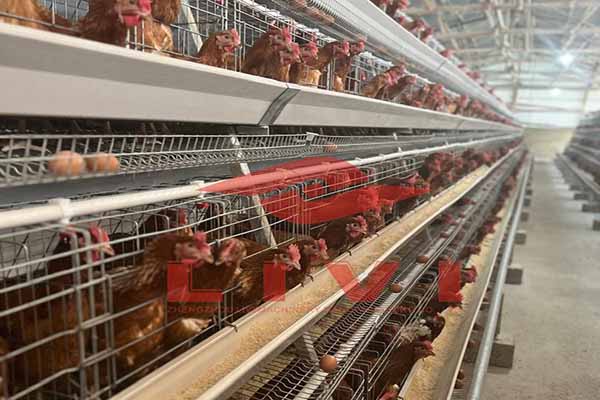How to Start a Chicken Farm in California: A Comprehensive Guide
Time : 2025-04-16
Are you thinking about starting a chicken farm in California? Great choice! The state is known for its rich agricultural landscape and supportive farming community. However, before you dive in, it’s important to have a solid plan in place. In this article, we’ll cover everything you need to know about starting a chicken farm in California, from choosing the right location to marketing your products.
1. Research and Plan
Before you even think about buying chickens or land, it’s crucial to do thorough research and create a solid business plan.
a. Market Research
First, you need to understand the market in California. Look into the local demand for chickens and chicken products. You can check local supermarkets, restaurants, and farmers markets to see what kind of products are in demand and what prices people are willing to pay.
b. Business Plan
A business plan will help you outline your goals, strategies, and financial projections. Include sections such as:
– Executive Summary
– Company Description
– Market Analysis
– Organization and Management
– Services Offered
– Marketing and Sales Strategy
– Financial Projections
2. Choose the Right Location
The location of your chicken farm is crucial for its success. Here are some factors to consider when choosing a site:
a. Zoning and Permits
Ensure that the land you’re considering is zoned for agricultural use. You’ll also need to obtain the necessary permits from local authorities to operate a chicken farm.
b. Access to Resources
Look for a location that’s easily accessible to suppliers and markets. It should be close to transportation routes for easy delivery of feed and transportation of eggs and chickens.
c. Land Availability
Choose a piece of land that has enough space to accommodate your chickens and other farming equipment. Ensure the soil quality is suitable for chicken farming.
3. Select Your Chicken Breed
The type of chickens you choose will depend on your business goals, market demand, and climate in California. Here are some popular chicken breeds for different purposes:
a. Layers
For egg production, breeds like the laying hens – the Red Star, Orpington, and White Leghorn are popular choices.
b. Broilers
If you plan to raise chickens for meat, consider breeds like the Cornish Cross, Ross 308, or Cobb 500.
c. Dual Purpose
For those who want to produce both eggs and meat, breeds like the Plymouth Rock, Sussex, and Ameraucana are good options.
4. Build Your Chicken Coop
Constructing a chicken coop is essential for keeping your chickens healthy and safe. Here are some tips for building a chicken coop:
a. Size and Layout
The coop should be large enough to accommodate your chickens and provide space for them to roam and lay eggs. Ensure there are enough nesting boxes for egg laying.
b. Ventilation and Temperature Control
Good ventilation is crucial for maintaining air quality and temperature control. Use vents to allow fresh air to enter and remove heat and ammonia gases.
c. Bedding and Floors
Use a suitable bedding material like straw or wood shavings for the coop floors. It should be easy to clean and maintain.
5. Feed and Nutrition
Adequate nutrition is vital for the health and productivity of your chickens. Here are some tips for providing proper nutrition:
a. Feed Selection
Choose high-quality chicken feed that meets the nutritional requirements of your specific breed and stage of growth.
b. Fresh Water
Ensure your chickens have access to clean, fresh water at all times.
c. Supplements
Consider adding supplements to your chickens’ diet to provide additional nutrients, such as grit for digestion and calcium for eggshell formation.
6. Disease Prevention and Biosecurity
Maintaining a healthy flock is essential to the success of your chicken farm. Here are some disease prevention and biosecurity measures:
a. Regular Health Checks
Regularly check your chickens for signs of illness and consult with a veterinarian if necessary.
b. Sanitation
Keep the coop and surrounding area clean and free of waste. Disinfect equipment and prevent rodents and other pests from entering the coop.
c. Biosecurity Measures
Implement biosecurity measures such as limiting access to the farm, wearing protective clothing, and avoiding bringing in any outside birds.
7. Marketing and Sales
Marketing your chicken farm and products is crucial for attracting customers and generating revenue. Here are some strategies to consider:
a. Direct Sales
Offer direct sales to customers through your farm stand, community events, or home delivery services.
b. Online Presence
Create a website and social media accounts to promote your farm and products.
c. Local Partnerships
Develop relationships with local restaurants, grocery stores, and markets to sell your eggs and chickens.
8. Financial Management
Proper financial management is essential to ensure the sustainability of your chicken farm. Here are some tips:
a. Budgeting
Create a detailed budget that includes costs for feed, equipment, labor, marketing, and other expenses.
b. Record Keeping
Keep track of all financial transactions, including income and expenses, to monitor your farm’s profitability.
c. Seeking Financing
Consider seeking financing through loans or grants to help get your chicken farm off the ground.
Conclusion
Starting a chicken farm in California can be a rewarding and profitable venture. By following these steps and staying informed about the latest trends and best practices in chicken farming, you’ll be well on your way to a successful operation.












